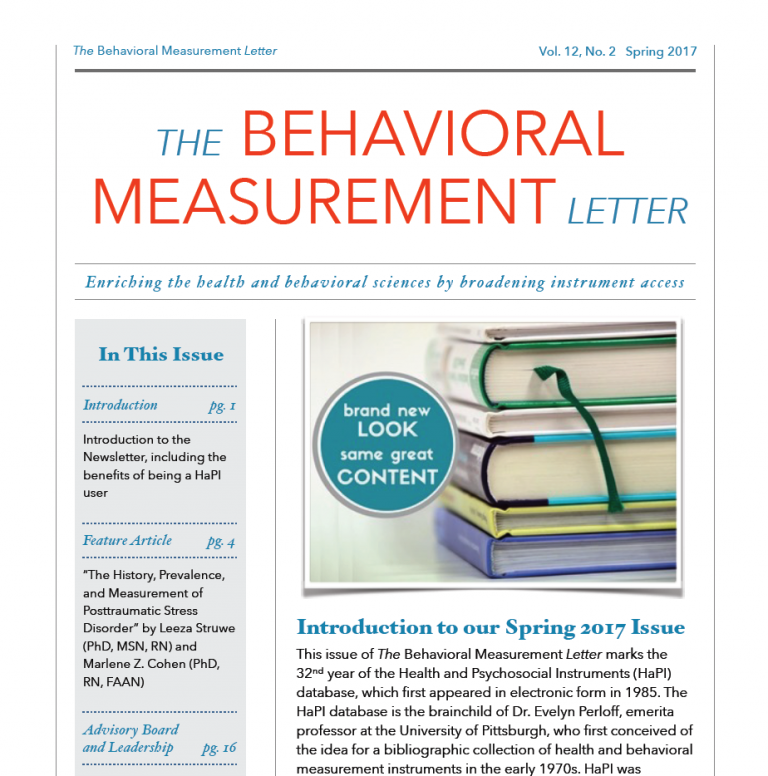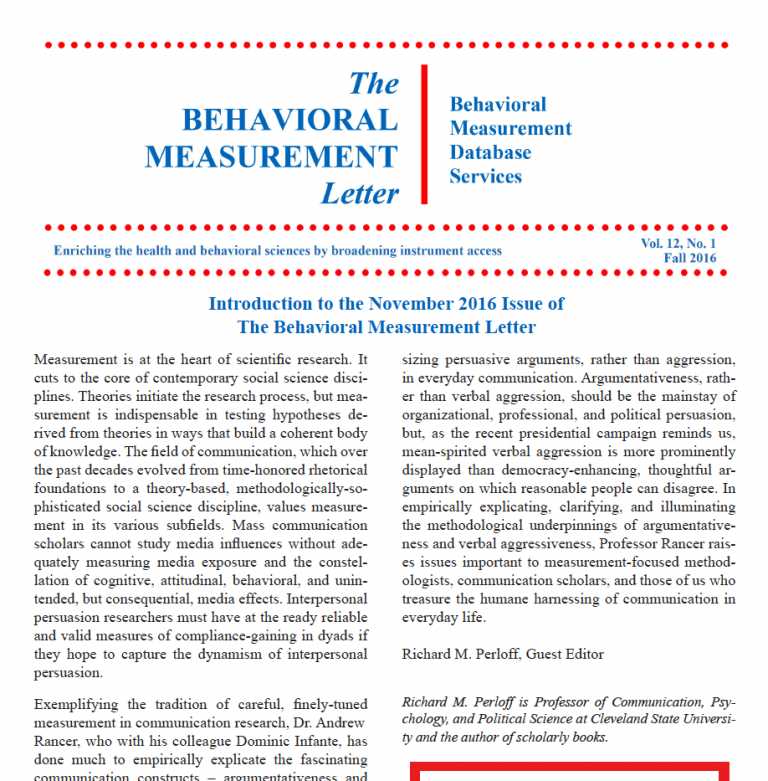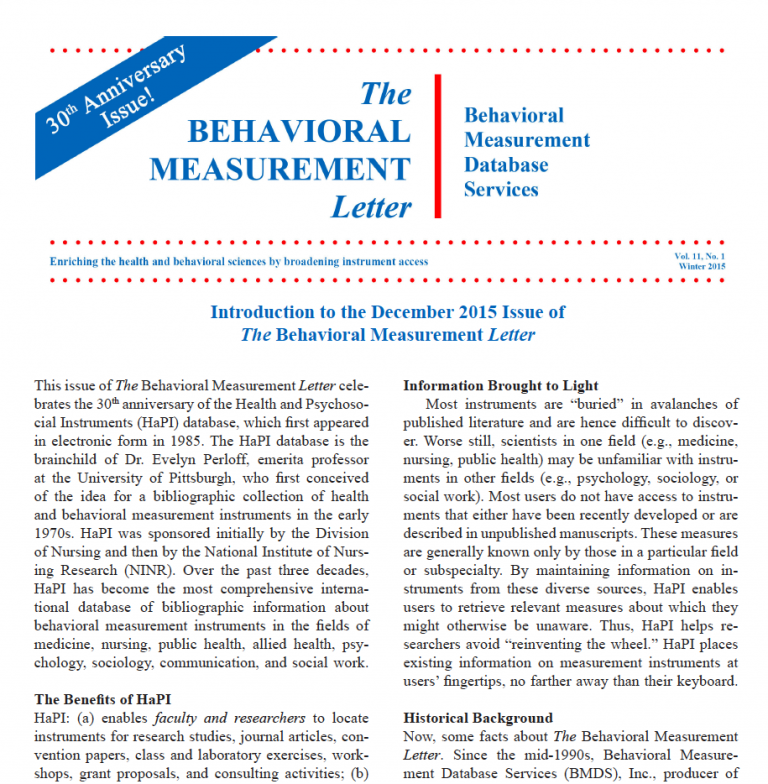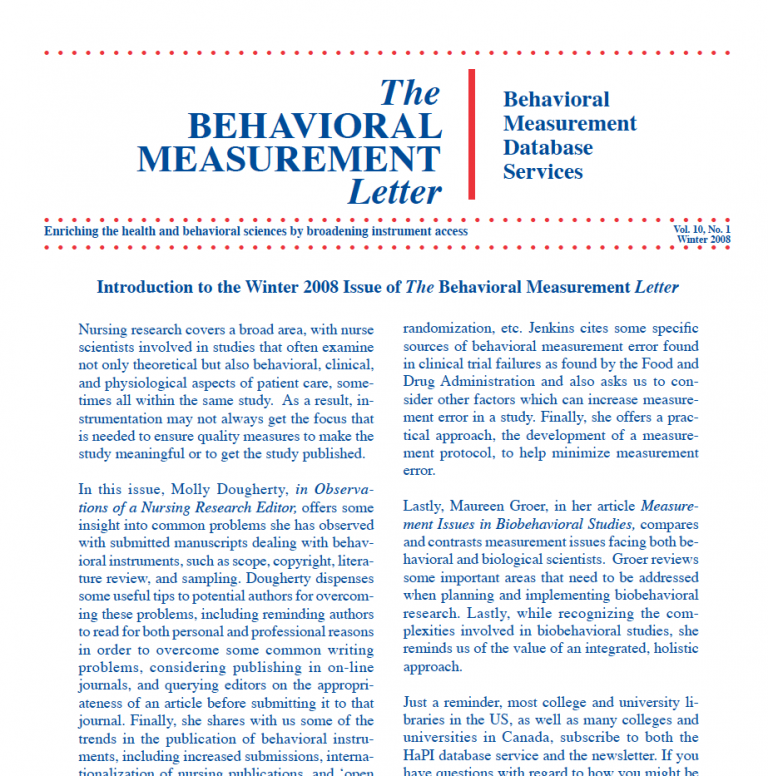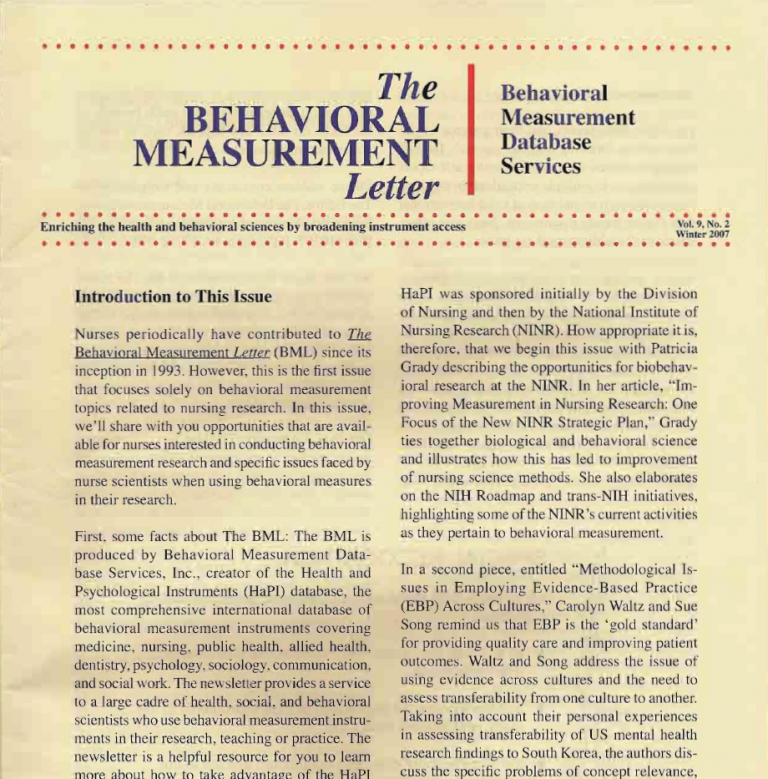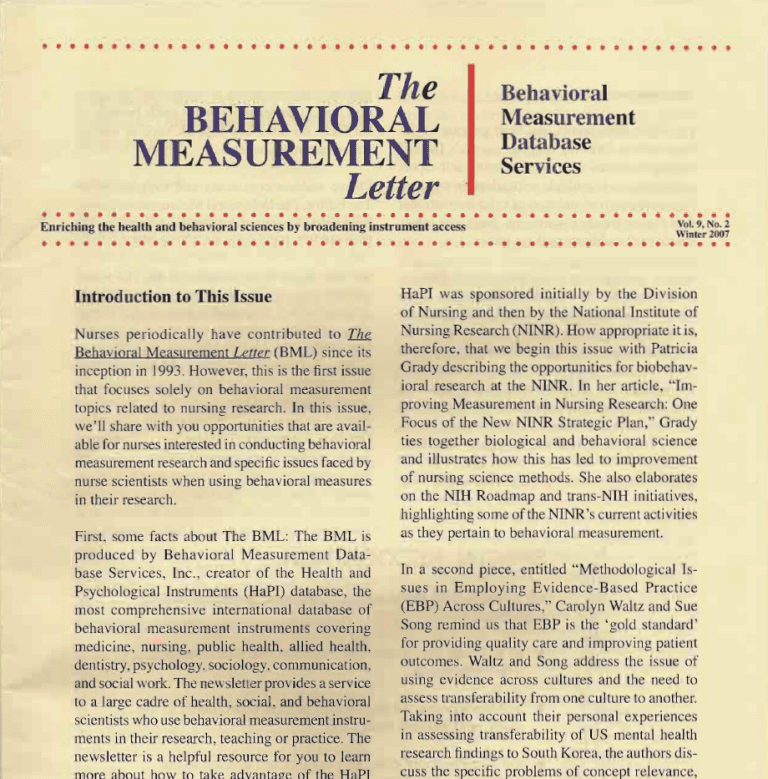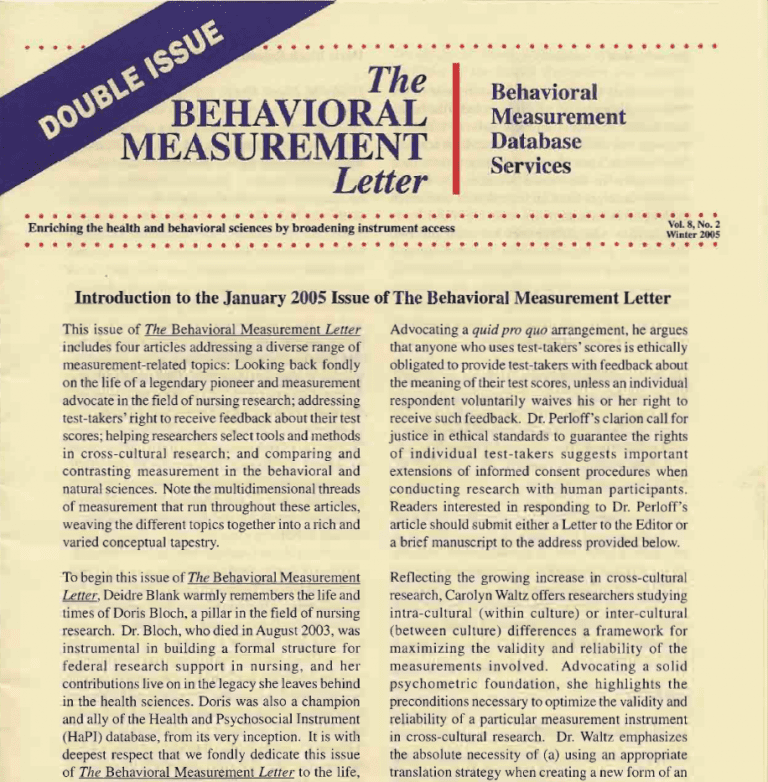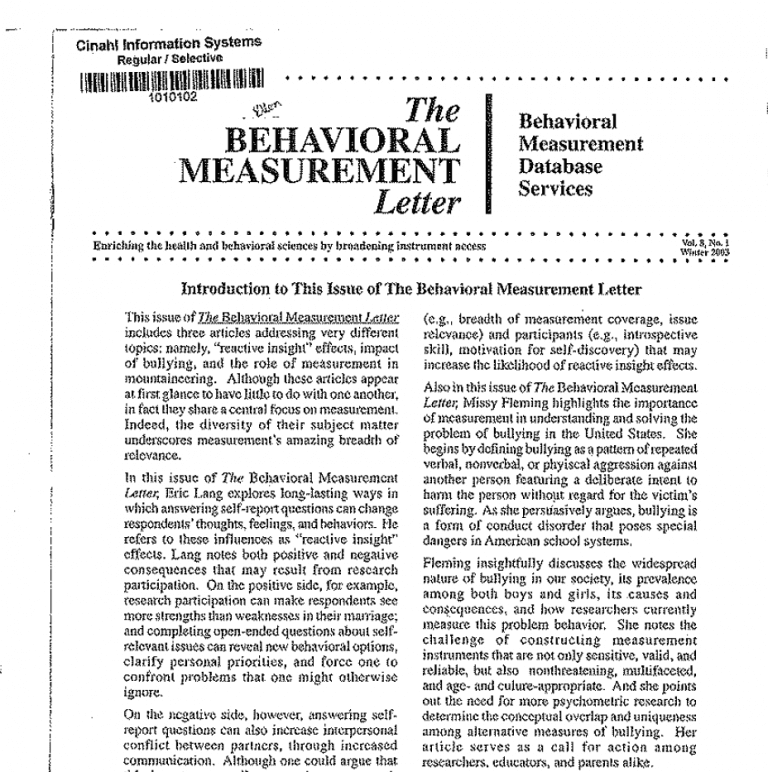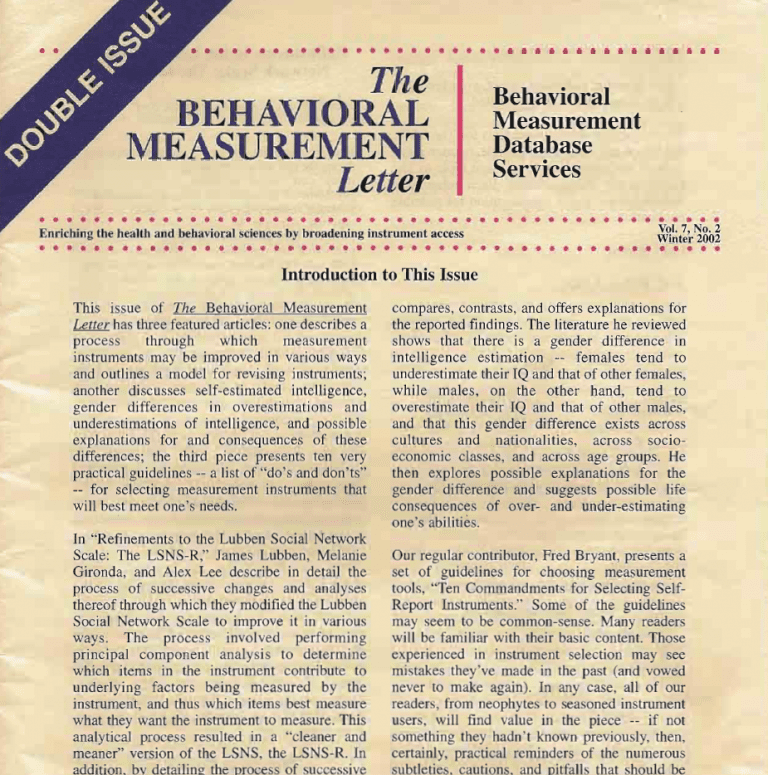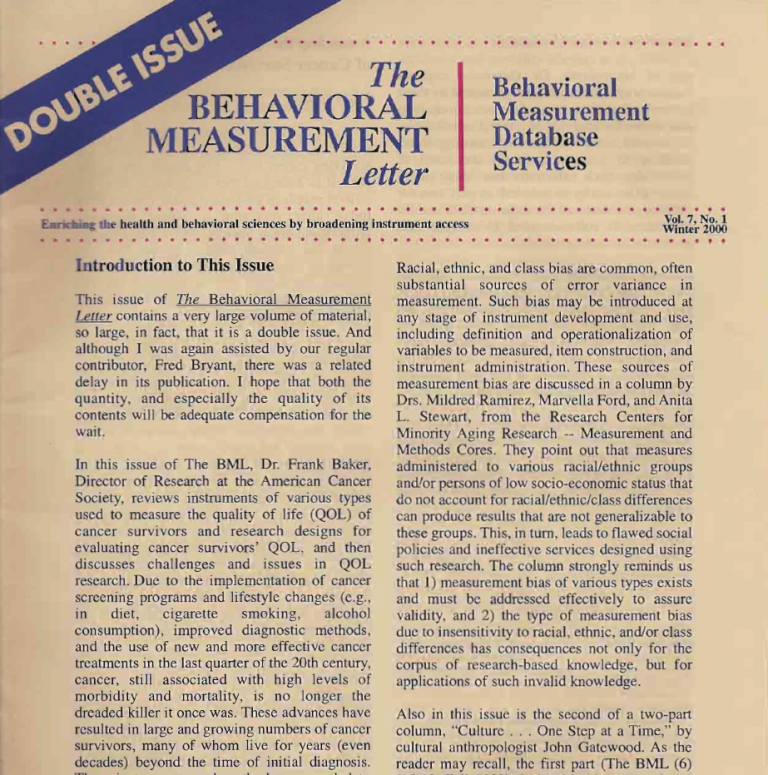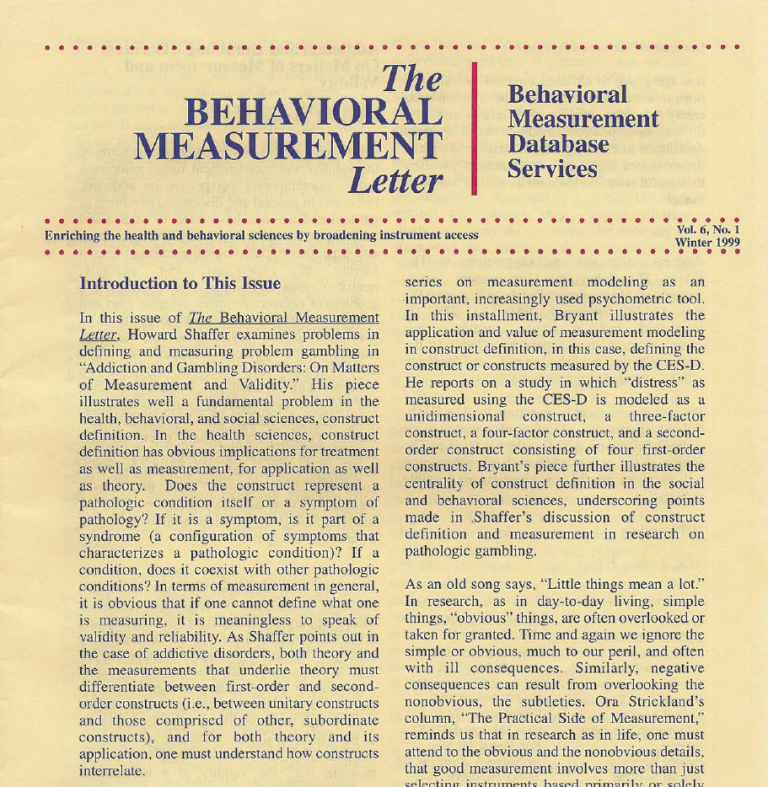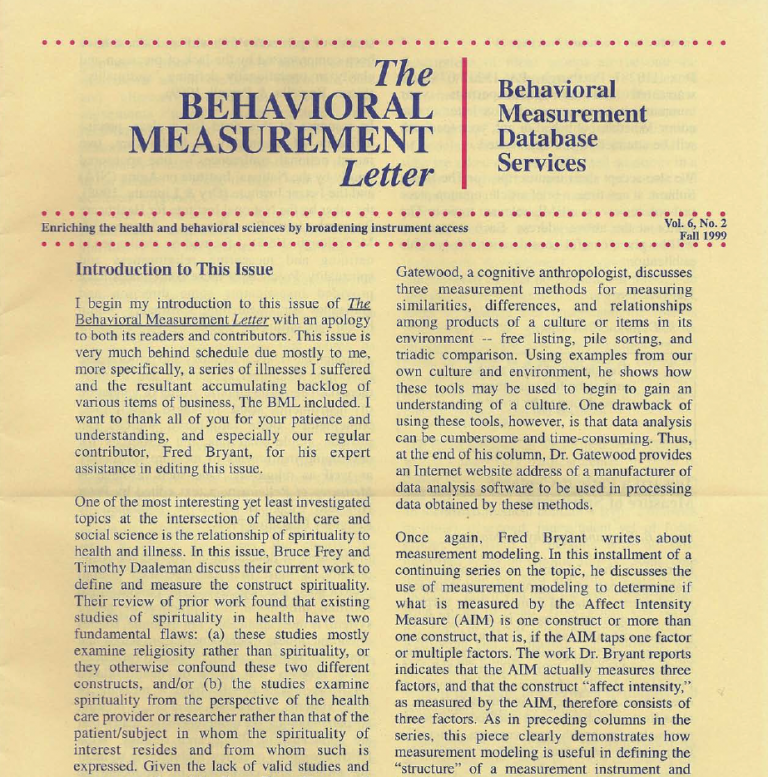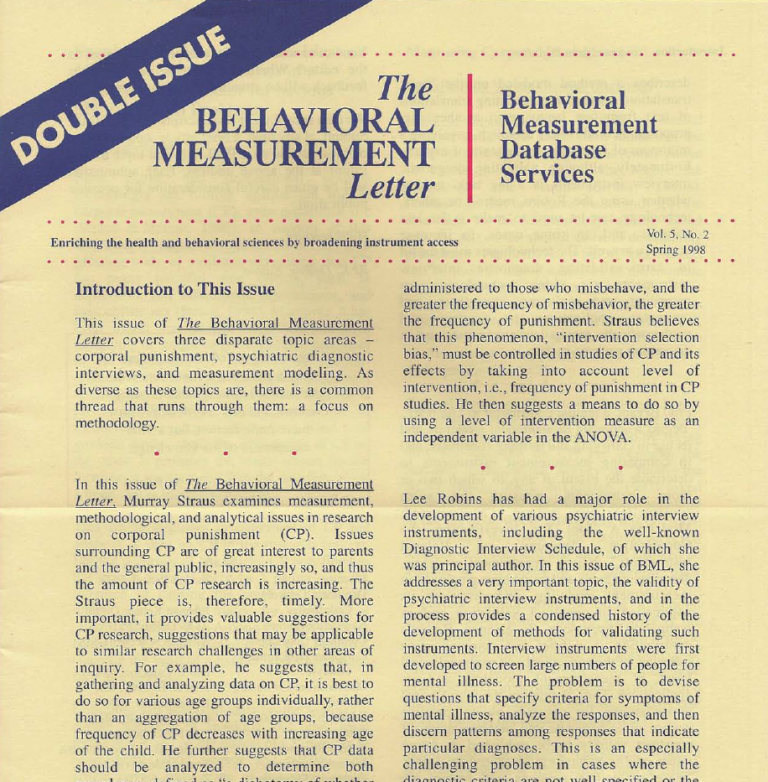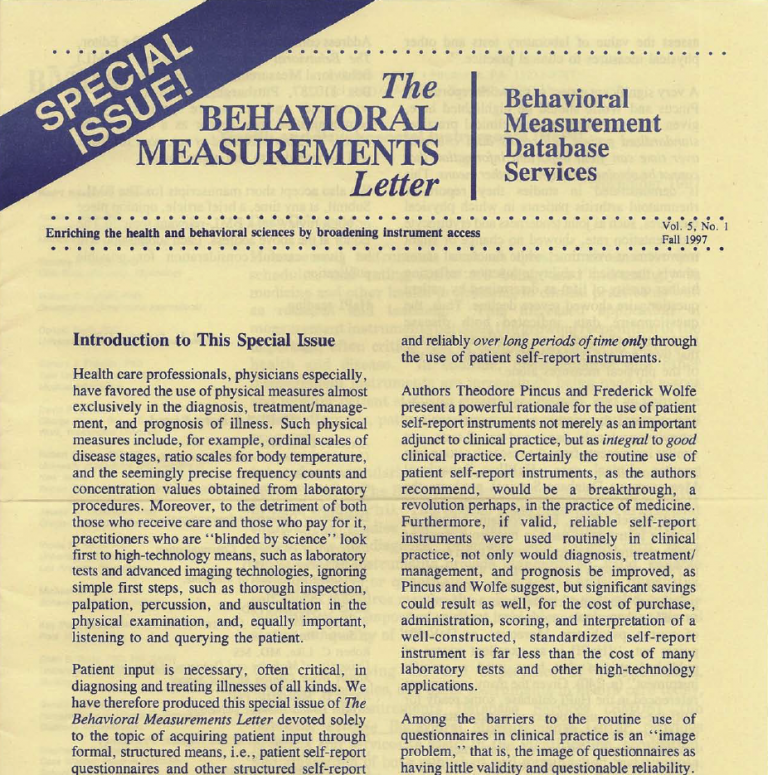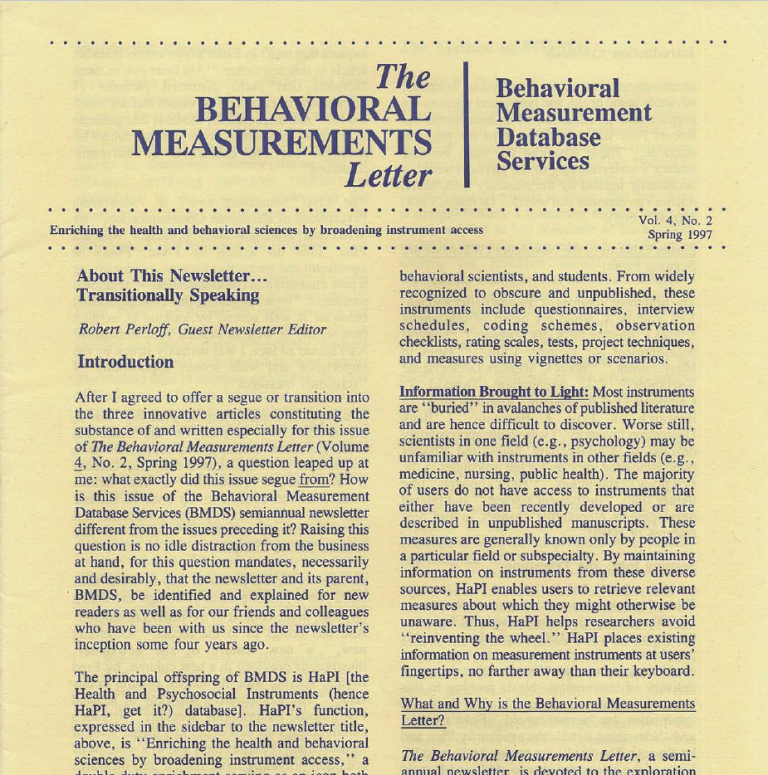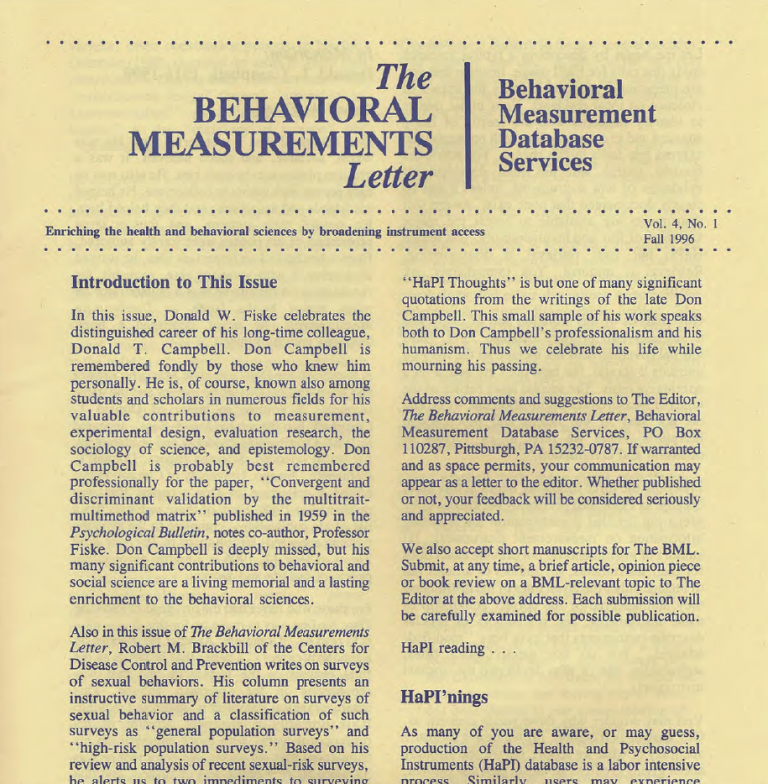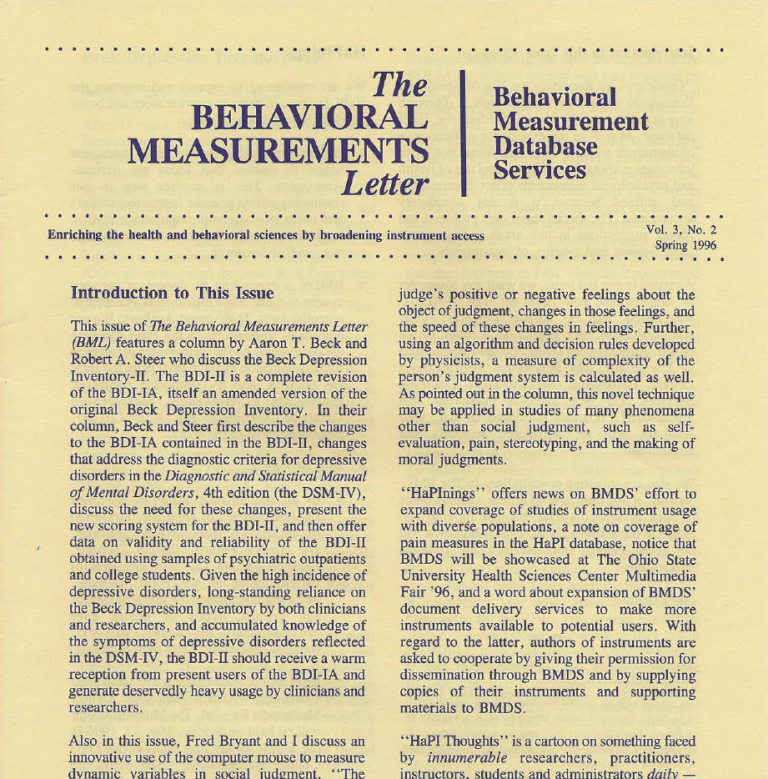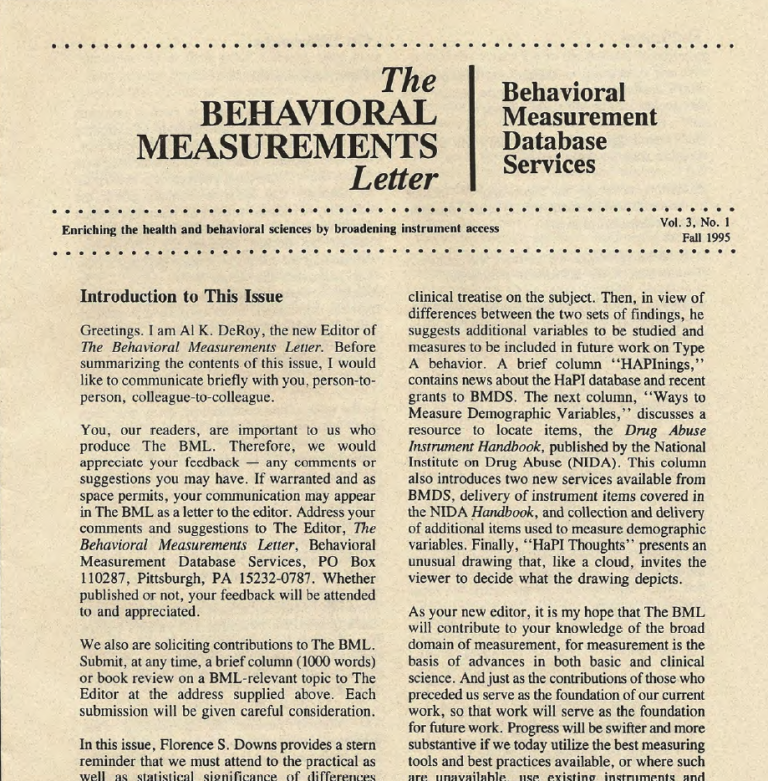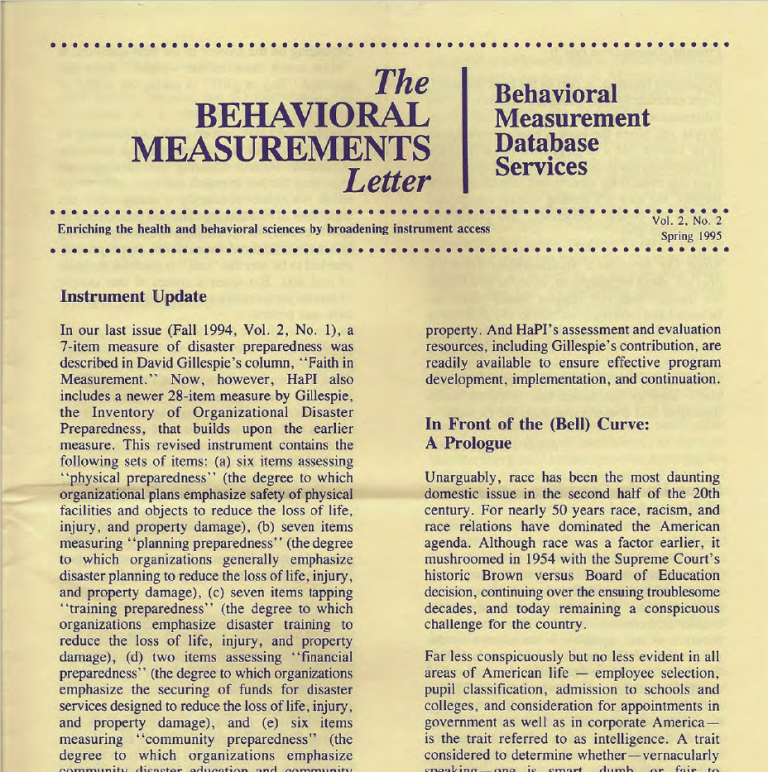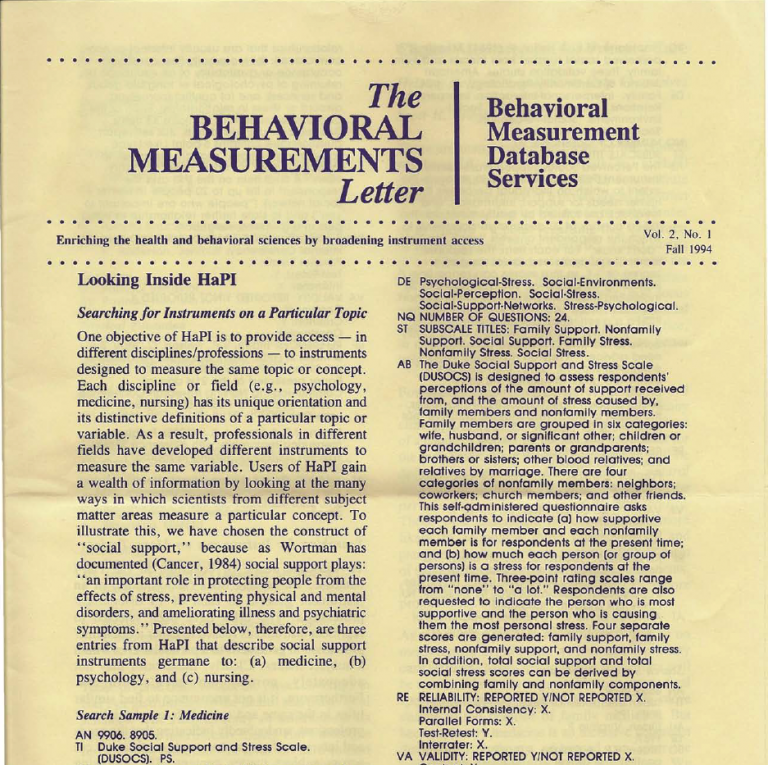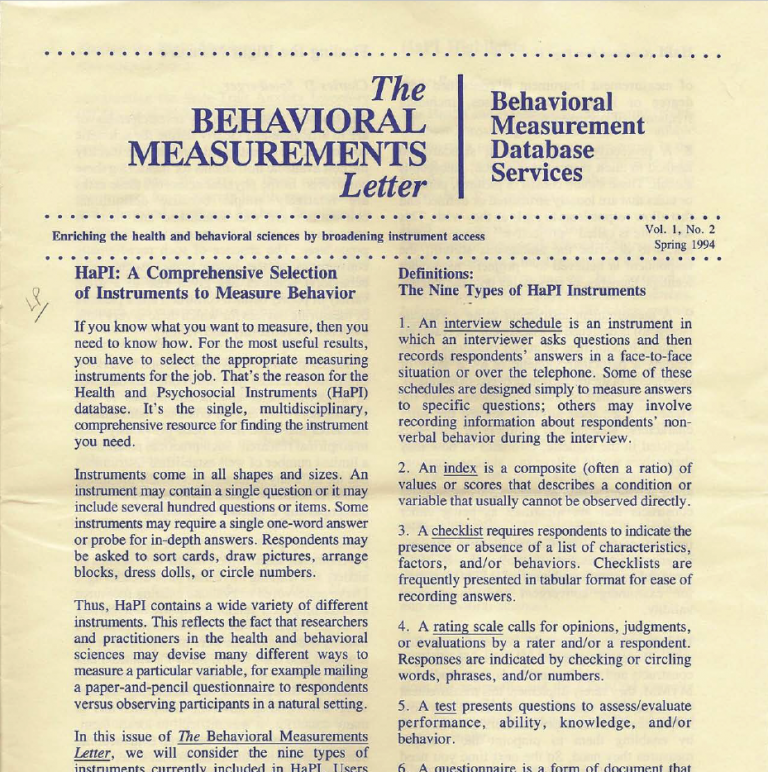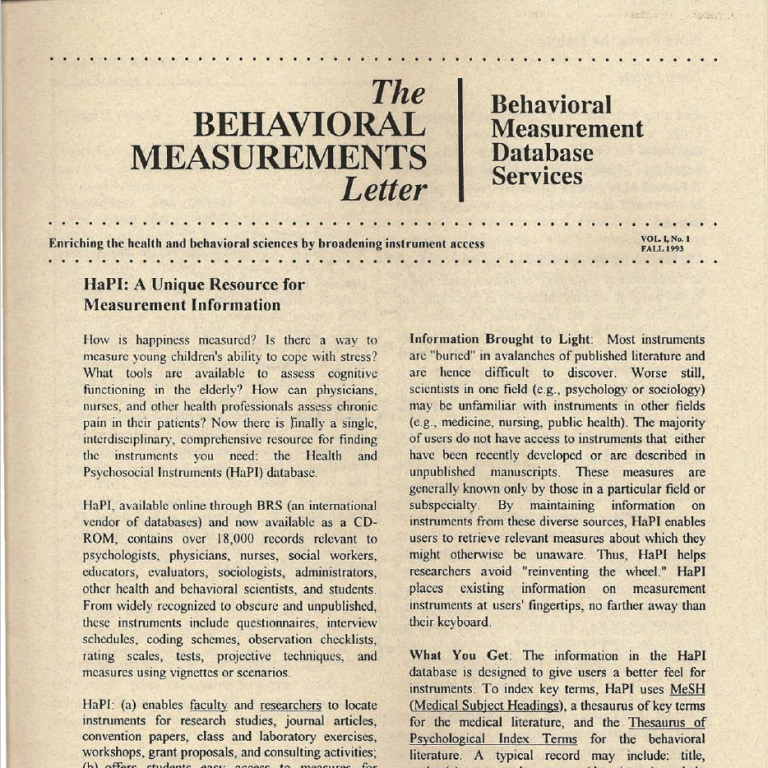Continued article from the The Behavioral Measurement Letter, Vol. 2, No. 1, Fall 1994
Helping Helpers Help Patients Help Themselves
Scott H. Frank
There are many reasons to create or use clinical psychosocial measurement tools in medical practice. One can do so in order to demonstrate the relative importance of a psychosocial construct through delineating its incidence or prevalence; or to “prove” a point regarding that construct; or to demonstrate that a construct in fact exists; or to demonstrate the relationship between the construct and issues of importance to the practice of medicine. This column, however, will focus on realistic measurement of useful psychosocial constructs in the context of busy clinical practice, in order to allow practicing clinicians to better help their patients.
For practicing clinicians, even the word “construct” is problematic, since for many clinicians, it implies an artificial edifice instead of a naturally occurring phenomenon. At least for the purposes of this column, a construct will be defined as an idea for describing natural phenomena built into a structure which can be perceived as real because of its replicability. Those who understand the construct are more likely to recognize those characteristics and patterns which contribute to the body and form of that idea, expressed as suffering in our patients. Once recognized, the construct may be more productively addressed.
As a family physician, my emphasis will be on measurement in the doctor’s office and in primary care settings. Many of the points made here will be translatable to nursing, social work, or medical specialty settings, while others may be more unique to the practice of family medicine. But because family medicine is an inclusive generalist discipline, the issues addressed can span the horizon of problems in clinical settings. We address problems from prenatal care, to adolescence, to parenting, to death and dying; from mood states, to states of being, to psychiatric diagnoses; men and women, individuals or families, educated or illiterate. I have personally found great clinical utility in measures addressing constructs as diverse as psychiatric diagnosis (depression or anxiety), stress, alcoholism, drug abuse, nicotine dependence, eating disorders, domestic violence, social support, family function, somatization, self-esteem, and functional status. This list is by no means exhaustive, but gives a flavor of the variety of topics that can be evaluated.
If we believe that the issues should fit into the context of patient care (and I do), there are certain “rules” to be followed in order to allow practicing clinicians to accept the utility of a clinical measurement instrument and the construct it purports to measure.
- A construct doesn’t exist unless it can be measured (and measured accurately).
- Well validated and reliable questionnaires are the ” laboratory tests” of psychosocial problems, and pencil and paper are often our only laboratory tools. Use the same language to communicate the accuracy of these psychosocial measures as is used with other medical screening procedures.
- A construct cannot be measured unless it is asked in language the patient can understand.
- Simplicity is next to cleanliness, and we know what that’s next to.
- It doesn’t matter whether a construct exists if it cannot be measured efficiently.
- Practicing physicians are faced with an overwhelming volume of voices shouting instructions regarding what must be done to offer competent, comprehensive, preventive care to patients. Thus, efficiency is a top priority.
- A construct is not worth measuring unless the result implies a difference in approach for that patient.
- Don’t expect me to screen for something that I can do nothing about.
- A construct is not worth measuring unless the results can be easily tabulated and easily communicated.
- Simple, practical scoring systems lead to actual clinical use.
- A clinical measure has no utility unless it is flexible enough to recognize the uniqueness of my practice and my patients.
When it comes to clinical measurement keep it SAFE: Simple, Accurate, Flexible, and Efficient. Future installments will focus on instruments available for addressing different topics, how one judges their utility, and how (or when) to create your own instruments. Please let us know if there are topics of special interest you would like to see discussed next.
Scott H. Frank is Director of the Division of Pre-Doctoral Education in the Department of Family Medicine at Case Western Reserve University. He has an M.D. from the University of Michigan and a Master of Science in Family Medicine from Case Western Reserve University. In addition to clinical practice, research, and teaching, Dr. Frank teaches creative writing to medical students. His primary academic interest involves integration of psychosocial issues into clinical practice. Dr. Frank has developed instruments for the measurement of perceived stress, family stress, family capability, family alcohol problems, tobacco dependence, and anomy.
Read additional articles from this newsletter:
Looking Inside HaPI: Searching for Instruments on a Particular Topic
2-1-fall-1994

